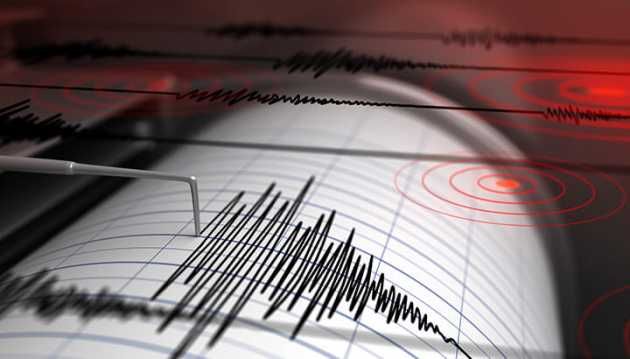Geologists have confirmed that fracking operations caused an earthquake in Kansas that measured 4.9 on the Richter scale. Despite this, the injection of fracking wastewater near the site continues.
Both in the United States and abroad, hydraulic fracking is a highly controversial issue. The more this method is practiced, the more we are discovering its negative impacts.
What is fracking?
Hydraulic fracking involves injecting rock formations with a fracking liquid, usually water combined with sand or thickening agents. The liquid creates cracks in the rock that allow for the flowing of natural gas or petroleum.
Why fracking?
Fracking allows companies to be able to extract resources that were previously too difficult or costly to obtain. Proponents of fracking believe that it allows countries energy independence. It allows them to harvest their own resources, as opposed to being dependent on a foreign country.
Critics of fracking, on the other hand, point to the numerous examples of environmental degradation that have occurred as a result of the practice. They argue that environmental regulations are failing to protect nearby communities.
One of the concerns with fracking operations is the link between disposing fracking wastewater (by injecting it deep underground) and increased seismic activity. The actual act of fracturing rock is linked to increased seismic activity as well.
Kansas earthquake
Kansas is not an area prone to earthquakes. They are more of a tornado state, once famously sweeping Dorothy’s whole house through the air. So when an earthquake hit 4.9 on the Richter scale and could be felt as far away as Memphis, geologists wanted to figure out why.
The earthquake hit on November 12, 2014 and it reached 150,000 square miles. The earthquake hit Milan, a small Kansas town with a population under 100, the hardest. The small town was not designed with earthquake readiness in mind. The earthquake damaged the town’s post office and school house.
The earthquake struck next to two fracking wells. SandRidge Energy owns one of the wells. Despite the earthquake, the company continues to inject the same amount of wastewater into the ground.
The investigation
The USGS conducted an investigation into the cause of the earthquake, however, this was hardly a geological “whodunit.” The team concluded that the earthquake was caused by nearby hydraulic fracking operations based on four key observations:
- No similar earthquakes occurred in the area before fracking.
- There were wastewater injection wells nearby.
- The earthquake activity started after the amount of water injected into the wells increased.
- The earth could be activated by changes in pressure in that area.
Furthermore, the team discovered that the fracking operations were taking place near a previously undiscovered fault line. It kind of makes you wonder how many other fault lines are out there that we don’t know about yet, and how close they are to other fracking operations.
Earthquakes in Oklahoma
In March, the USGS released a report warning that seven million people throughout the areas of Oklahoma, Arkansas, Texas, Kansas, New Mexico and Colorado are now living in the same earthquake-prone conditions as California. Then, in September, Oklahoma experienced a record-breaking 5.6 earthquake. As a result, the state ordered the shutdown of 37 disposal wells.
News outlets only reported minor injuries. However, the Pawnee Nation reported that six of their buildings had become uninhabitable due to damage from the earthquake.
Western Canada and earthquakes
Also, in March of this year, the Seismological Research Letters published a report from Western Canada that linked earthquakes in the region to fracking operations.
Researchers looked at seismic activity in the area between 1985 and 2015. The report was able to link 17 wastewater disposal wells and 39 hydraulic fracking wells to earthquakes registering over a magnitude 3.0 on the Richter scale. Researchers found that more than 90 percent of the area’s earthquakes were linked to fracking operations.
Other environmental consequences
Unfortunately, increased seismic activity isn’t the only consequence. The environmental impacts of fracking are far-reaching and harmful to our health.
Drinking water
The process of fracking releases methane and other toxic chemicals. These pollutants find their way into the groundwater and, eventually, drinking water supplies. The EPA concluded that 11 states have experienced drinking water contamination as a result of fracking operations.
Air quality
Fracking wastewater is often left in open-air pits. This releases volatile organic compounds into the air. Exposure to VODs and other toxic chemicals are linked to a host of health problems. They can be particularly harmful to pregnant women or young children.
Radiation
The second leading cause of lung cancer in the United States is exposure to the radioactive gas radon. The EPA estimated that 21,000 lung cancer deaths a year are related to this particular radioactive gas.
A recent study out of John Hopkins University found that buildings located near fracking operations had 39 percent higher levels of radon. Researchers have not established a direct link between fracking operations and radon. However, it is possible that the process of fracturing bedrock is releasing radon into the air.
Help tackle fracking
Look at fracking from the point of view of someone focused on creating local sources of energy. It seems to make a fair bit of sense, right? But if you come at the issue from almost any other angle, it’s really just making the ground less stable and polluting the water and air.
Many people are of the opinion that with renewable energy production and efficiency growing at an exponentially fast pace, we should no longer be investing in dangerous and unstable forms of energy extraction, such as fracking.
If you want to get involved further, the National Resources Defence Council has a handy package to help tackle fracking in your local community.
— Ian Carey

